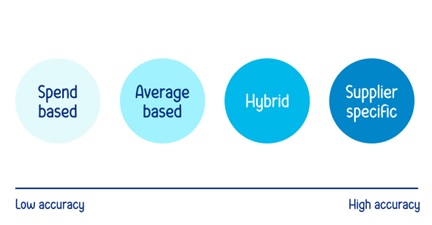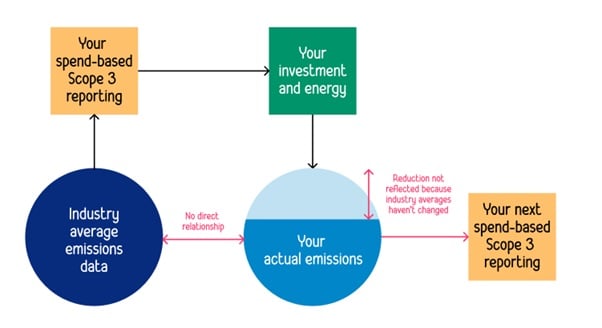Scope 3 emissions and their growing importance
Scope 3 emissions are those produced by activities outside of a business’ own operations. For example, the manufacture or use of products. These upstream and downstream emissions often account for over 75% of a company’s total, with retail and CPG companies growing to over 90%.
Therefore, governments and consumers are increasing pressure on businesses to address these previously overlooked emissions. In response, the International Sustainability Standards Board (ISSB), the body that informs the majority of the most commonly accepted sustainability standards, has recommended that businesses should publicly report on their Scope 3 emissions. Organisations that follow any of the GRI, SASB, CDP or TCFD standards should get prepared for more comprehensive and detailed Scope 3 reporting that places an increasing focus on action.
Estimating Category 1 emissions from purchased goods and services
Scope 3 emission are broken down into different categories. For product-orientated companies, Category 1 emissions from purchased goods and services will likely account for the vast majority of total Scope 3 emissions. There are four ways of calculating Category 1 emissions:
Most companies that are publishing a Scope 3 estimate within their sustainability and ESG (Environmental, Social and Governance) reports are using the spend-based method, as it does not require any primary data from suppliers. Whilst this makes it the easiest and quickest option, it also the lowest accurate by a wide margin. Spend-based analysis simply multiplies the amount a company spends in each purchased goods or services category by an industry-average emissions factor. Spend-based, therefore, provides a way of publishing a Scope 3 baseline that is more within a company’s control – with the large inherent inaccuracies accepted.
The fatal flaw in spend-based analysis
Whilst spend-based enables organisations to “tick the box” and publish a Scope 3 baseline, there is a fundamental flaw in the approach. Spend-based analysis uses industry-averages to calculate emissions and these do not reflect the prices you pay for materials (which can vary significantly from others). The averages are blunt tool to identify areas for improvement but falls short of specific actions or initiatives. Plus, it will not reflect improvements made in your supply chain.
Spend-based analysis can help you identify and reduce spend on more carbon intensive categories. But you cannot demonstrate a reduced carbon intensity of a particular category using this method based on changes you or your suppliers make .
Those organisations using the spend-based method must find ways to begin to incorporate data from their suppliers if they are to report and demonstrate their progress towards their Net Zero or carbon reduction targets. Else businesses risk expending too many calories on reporting for reporting sake and neglecting the activities that will really drive change.
Moving beyond spend-based to demonstrate progress
The UK Transition Plan Taskforce (TFT) recently issued guidance to businesses looking to improve the Net Zero implementations. Within this guidance, TFT recognise that companies “currently face challenges in reporting accurate and reliable Scope 3 emissions data”. In a refreshingly frank and pragmatic tone, however, TFT assert that businesses must identify and overcome the barriers to supplier data collection.
For most businesses, these challenges present themselves as:
- Suppliers unable to answer the questions asked
- Low supplier response rates
- Resource intensive supplier chasing and data consolidating/reporting
Supply Pilot provide award-winning supplier collaboration software and supplier engagement services to overcome these specific challenges. The successful approach to Scope 3 combines an ability to:
- Tailor communications, data requests, and support to suppliers based on where they are on their own sustainability journey
- Collect data from suppliers at pace achieving industry-leading response rates
- Combine average-based, hybrid and supplier specific methods to an ever-increasing level of Scope 3 reporting accuracy
- Provide a full suite of tools to drive learning, action, and progress at scale across the entire supply chain.
Businesses that are truly committed to Net Zero can no longer procrastinate around meaningful supplier engagement. Those looking to go beyond publishing a number for a report (and instead drive measurable decarbonization) should look to Supply Pilot and their pragmatic, cost-effective, and impactful solution to the traditional challenges of supplier engagement at scale.




